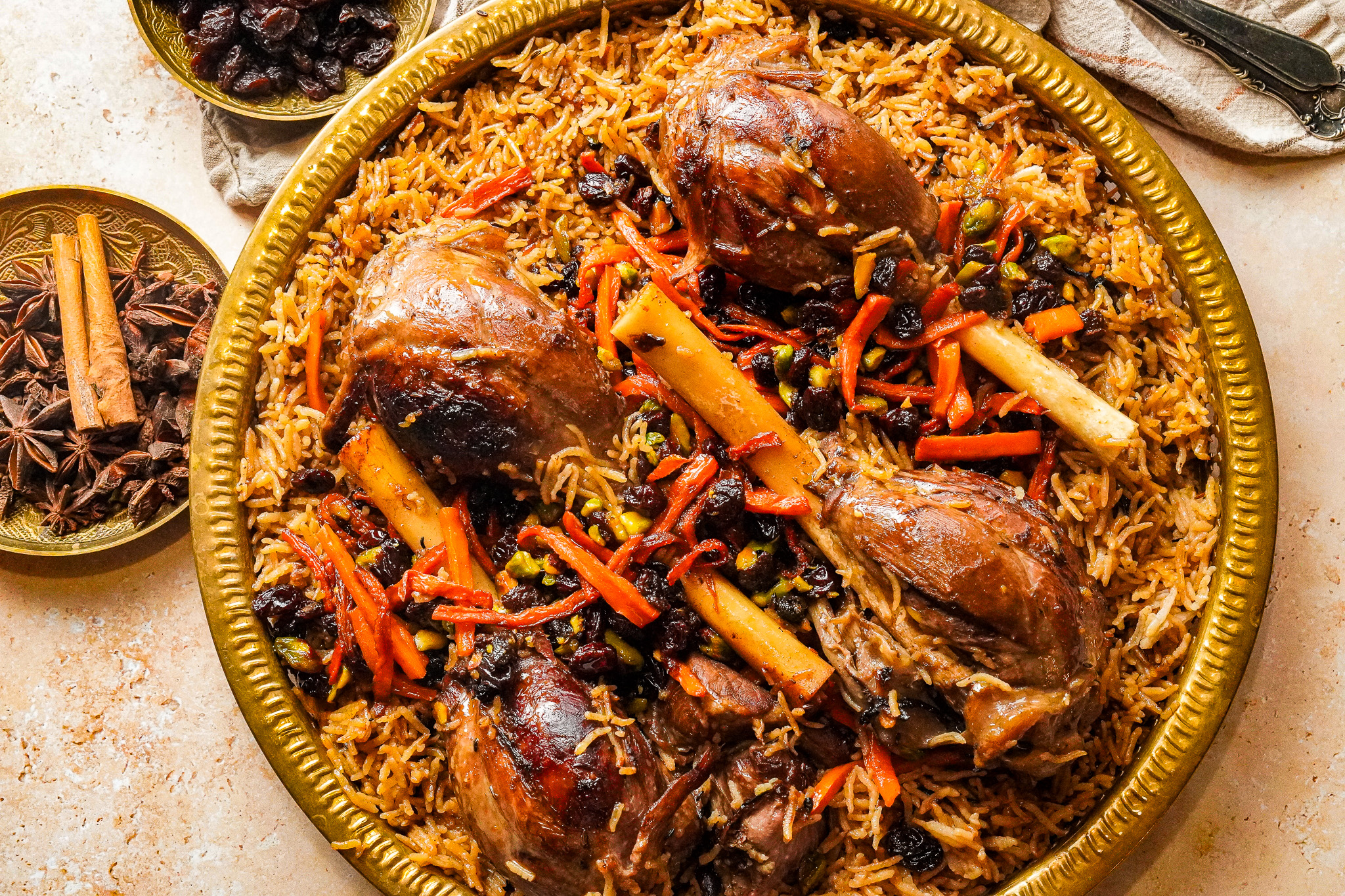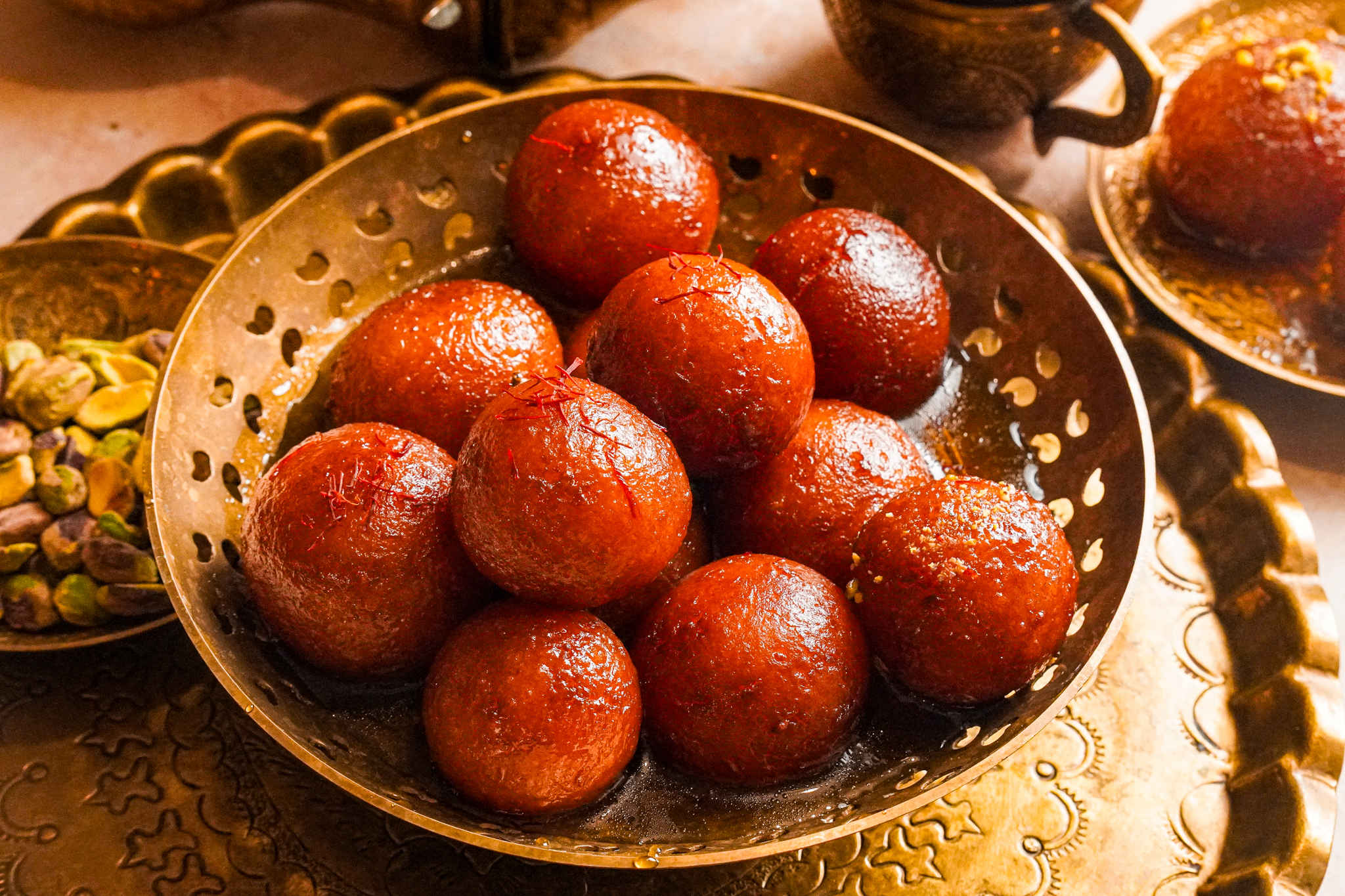Awameh, or Luqaimat, are Middle Eastern-style crispy donut balls. They’re crunchy on the outside with a perfect crisp and a soft and airy interior. They’re dunked in an orange blossom simple syrup and enjoyed fresh.
In my opinion, the best things in life are sweets that are fried, and these Awameh do not disappoint. These luqaimat are popular all around the Middle East, especially during the Holy month of Ramadan.
They’re the perfect post-Iftar treat! These fluffy and crispy little doughnut balls are shaped, fried, and then bathed in simple syrup, thus creating the best dessert combination ever.
Some Arabs call them “Luqmat Al Qadi,” and some stuff them with cheese or chocolate. However you make it, just know it won’t disappoint. If you want to try more deep-fried Middle Eastern desserts, try this Mushabak Halabi recipe.
The Best Crispy Luqaimat (Awameh)

What Is Awameh (Luqaimat)?
Awameh is a Middle Eastern-style crispy doughnut ball. They look like doughnut holes but do not taste like them at all. They’re crispy, sticky, sweet, and slightly airy on the inside.
These deliciously sweet little dumplings are made with yeasted dough and are pretty simple to put together. When you make these the right way, the end result is an unforgettable treat. Crispy and delicious.
Awameh is an Arabic word stemming from the root word (‘Am), which means to float or swim afloat. This is due to the fact that when the crispy awameh balls are fried, they are first dropped in the oil, and then they float to the top.
Luqaimat means “bites”, as in plenty of them. Some even call these Middle Eastern crispy donut balls Luqmat Al Qadi, which means the judge’s bite. It’s referred to as such because the oldest Arabic cookbook compiled by Muhammad Bin Hassan Al-Baghdadi referred to them as such in his book from 1226.
More often than not, countries in the Arab Gulf refer to them as luqaimat where as the Levant Arab countries refer to it as awameh.
Luqmat Al Qadi

Varieties in Luqaimat or Awameh
As with a lot of Mediterranean and Middle Eastern dishes, there are plenty of variations. In the Arab Gulf, where they refer to them as Luqaimat, you’ll often hear about the different flavorings added to the Luqaimat. More often than not, those flavorings include saffron, cardamom, and sesame seeds.
In Greece and Cyprus, these little crispy delights are called Loukomades or Lokoumades. Most of the time, you drizzle them with honey, sesame seeds, or cinnamon. They’re a little different from Luqaimat, as they are a little more filled on the inside. They’re a little more doughy.
What I love about this mouthwatering awamat dessert is that there is no need to get it in “perfect” shape. They’re fun to make, as we use the method of squeezing the dough through a closed fist.
You could even use a piping bag. They’re not like other traditional desserts that need to keep their shape, making them much easier to deal with. The best part of this scrumptious awameh is the no-knead dough. Yep, it’s that easy to put together.
I have made this recipe a few times, so you don’t have to fret and look for another. It has been tested more than once to make sure it yields the desired outcome of a crispy exterior and an airy interior. The only hard work you have to do is fry them!
These are the perfect Ramadan dessert and post-iftar treat with a cup of Karak Chai or Mint tea.
These Luqaimat are Incredibly sweet!

Ingredients You Need for the Best Awameh
To make the best ever awameh and to ensure that the texture is how we want it, you’re going to need the following ingredients:
- All-purpose flour: The best kind of flour for all Middle Eastern desserts. It has no additional ingredients, which makes for the best results.
- Yeast: I used active dry yeast. You need the dough to activate and rise for a good 2 to 3 hours; active dry yeast is the best way to go.
- Salt: You need a tiny bit of salt to bring all the flavors together, especially in desserts.
- Sugar: Although you’ll be dunking the awameh in syrup, you still need to add some sugar to the dough. The yeast feeds on the sugar, which helps it activate.
- Powdered milk: This ingredient is optional, but I feel that it provides a fluffy interior to the dough balls.
- Baking powder: This is what you call the dessert riser. Baking powder is often used in desserts to help them rise and puff up. It also helps the dough balls stay fluffy on the inside.
- Cornstarch: The ingredient that makes these crispy luqaimat- crispy. You need to use cornstarch for that crunch factor.
- Orange Blossom Water: In Middle Eastern desserts, it’s very rare for vanilla to be used. You want to use rose water (if you like it) or orange blossom water (my preference).
- Water: The component that brings the dough together. Too much water would make the dough too runny. If you add too little water, your dough won’t be fluffy or crunchy.
- Oil: For frying. Don’t use olive oil. You need something neutral in flavor, like canola, mazola, or avocado oil.
Magical in Every Way

How to Make the Perfect Awameh:
First, start by preparing the Qater or Sheera. This is the Middle Eastern way of making sugar syrup. You need it to be at room temperature.
Second, you need to make the luqaimat dough. Sift together the salt, powdered milk, sugar, yeast, baking powder, cornstarch, and flour. Now, add in the slightly warm water and mix with a spatula until well incorporated. Cover tightly and let the dough rest in a warm place for 2.5–3 hours.
Third, after you let the dough rise for a good amount of time, you should see the dough puffy and stretched out. After that, you need to take a spatula again and deflate the dough by pulling it away from the sides towards the center. It should deflate.
Next, you need to heat up the oil. You need the oil to be a few inches deep so the awameh balls don’t stick to the bottom and have enough cooking room.
After that, transfer the batter into a piping bag and cut a small opening. You need to use a pair of kitchen shears dipped in a little oil to cut the dough balls as they come out of the bag. Dunk them in the oil and fry until a light gold or pale gold color appears.
Now, transfer the lightly golden dough balls into a strainer or colander. You’re going to double fry these.
Then, fry the dough balls once again until they get their signature darker color.
Finally, immediately remove them from the oil using a slotted spoon and dunk them in the qater. Toss them a few times for 20–30 seconds before removing them with a slotted spoon and transferring them to a serving platter.
Obsessed with these Awameh

Tips and Safety Tricks
In order to maintain the dough’s elasticity, avoid overwhisking the dough, especially if you are using an electric mixer. The dough is prepared to proof once a smooth paste has formed.
Do not overcrowd the oil. They won’t fry properly, won’t be crispy, and will most likely stay doughy.
Do not let them sit in the qater for long, that would make them soften quickly.
You can half-way prepare them by frying them the first time early on and then doing the second frying whenever you’re ready to serve.
Frequently Asked Questions(FAQs):
I think the best way to make it ahead of time is to reach the first frying stage. So fry them the first time, and then when you’re ready, fry them the second time.
These will be crispy for a few hours after frying, but they’re not good if they’re not fresh. The next day, they’ll definitely not be crispy anymore.
I prefer lightly sprinkling them with pistachios, but you could do anything you like. Plenty of people do Nutella and Biscoff drizzles.
Living the Sweet Life

Other Dessert Recipes You Need to Try:
Karabeej Halab (Mushabak Halabi)
Knafeh Na’ameh (Nabulsi Knafeh)
Ka’ak Asawir (Bracelet Cookies)
If you’ve tried this recipe, don’t forget to rate it and leave a comment below! I would love to hear about your experience. You can follow me on Facebook, Instagram, Tiktok and YouTube.

The Best Awameh (Luqaimat) Recipe
Ingredients
- 2¼ cups All purpose flour sifted
- 1½ tablespoons Cornstarch sifted
- 1¼ teaspoons Active dry yeast
- 1½ tablespoons Granulated sugar
- 1 tablespoon Powdered milk
- ⅛ teasoon Salt
- ⅛ teaspoon Baking powder
- ½ teaspoon Orange blossom water
- 1½ cups Lukewarm water
Oil, For Frying
Instructions
- To start, prepare the sugar syrup ahead of time so it cools to room temperature.
- In a bowl, sift together the flour, powdered milk, salt, baking powder, cornstarch, sugar and yeast.
- Add the water and mix well with a spatula until well mixed. Cover tightly and let the dough rise for 2-3 hours, until doubled in size and the dough puffy.
- Deflate the dough using a spatula and gather the dough from the sides of the bowl towards the middle, it should look alot smaller now.
- Heat up a few inches of oil, enough for the dough to be deep fried.
- If you're using a piping bag, transfer the dough to it now. Cut open a small slit to the balls. Using kitchen shears, dip them in a little oil so they don't stick to the dough. Snip off your desired dough ball size and add to the oil.
- Once they float to the top of the oil, let them become a light golden color before removing from the oil and onto a colander or strainer.
- Once all the dough balls are golden, heat the oil for another 2 minutes before adding the previously fried dough balls. Fry for another few minutes until a dark golden color, making sure to use your metal spoon to move them around.
- Immediately remove using a slotted spoon, and toss them in 1-1.5 cups of syrup for about 20-30 seconds before straining and serving.












3 Responses
This recipe was amazing. The dumplings turned out perfectly crunchy and sweet. Soo addictive. Restaurant quality at its best. Highly recommended!
I love awameh and this recipe is the easiest and quickest way to make it! Such a simple recipe to follow as well!
Delicious! A new family favourite ❤️